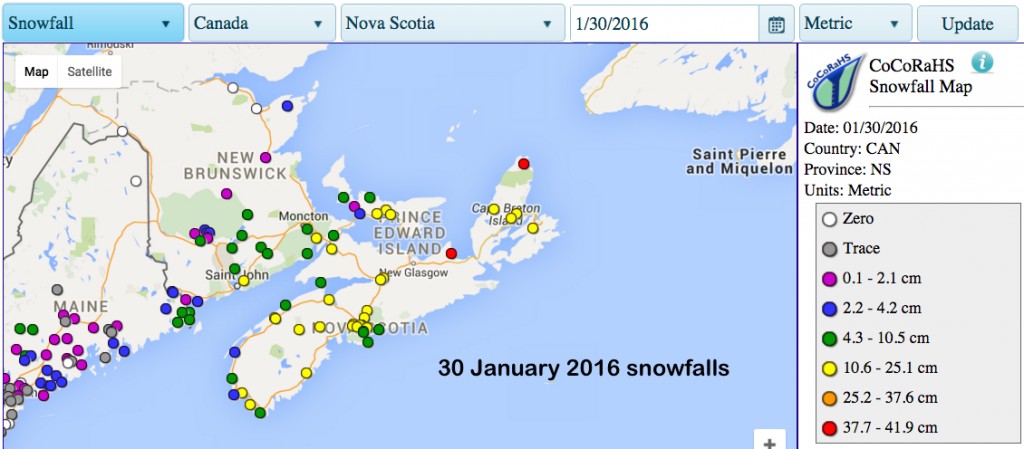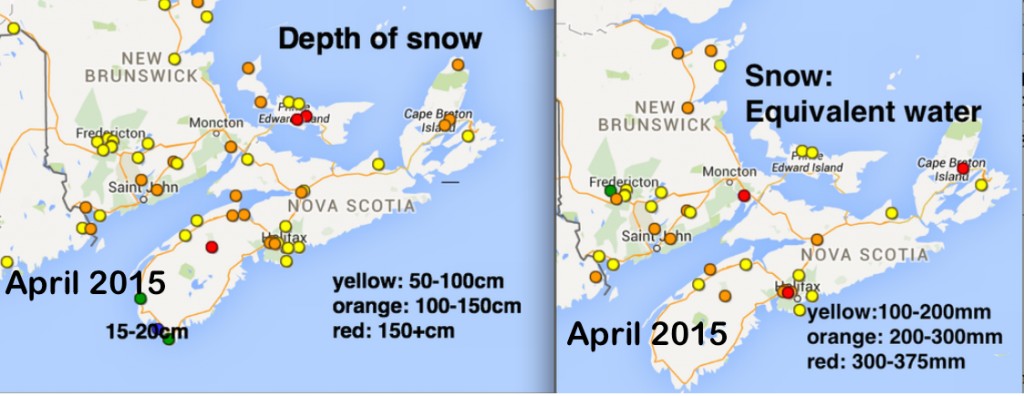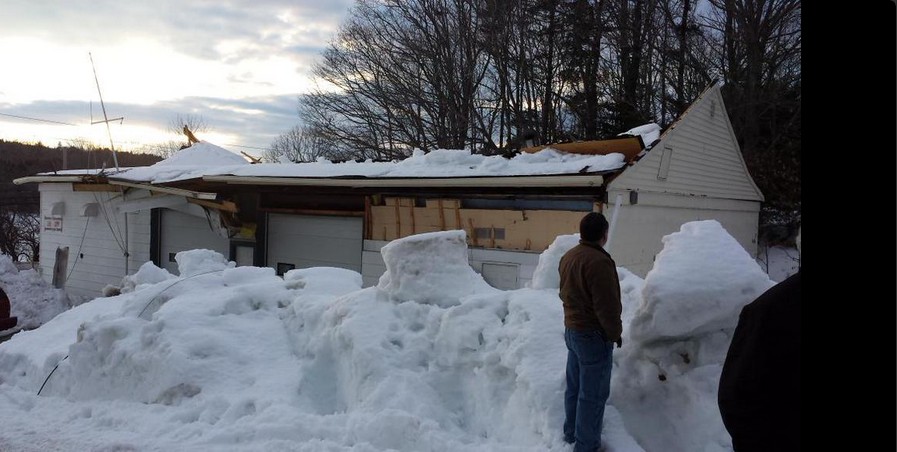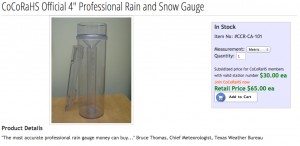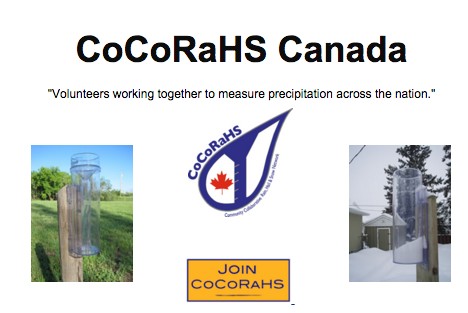
Given the lack of manual snow observations, I helped establish CoCoRaHS (Community Collaborative Rain-Hail-Snow) in Atlantic Canada a few years ago, in partnership with Environment Canada, CBC, and ScotiaWeather Services.
This week, I did a presentation to students at Elmsdale & District School on meteorology, including the value of measuring precipitation. They are considering to be one of the first Nova Scotia schools to join the CoCoRaHS program. Just a few weeks ago, I did a similar presentation to six Mi’kmaq communities, who are also very interested.
Citizen Science activities can achieve a number of objectives:
Valuable and Open Data
Meteorologists use precipitation measurements to validate their forecasts, better understand the impacts from storms, and assess changes and variability in the climate.
Open sharing of precipitation data can assist decision-makers such as farmers and water managers assess the state of the water resource so they can plan their crop and irrigation requirements, the availability of drinking water, and the availability of water for a variety of sectors like hydro-electricity and fisheries.
Municipalities need to assess their snow clearing capacity based on an understanding of how much snow has fallen. Snow-removal contracts may involve compensation based on snowfall.
Of course, the public and media are always interested in the amounts of snow or rain after a major storm.
CoCoRaHS has a good description of the users of their data: http://cocorahs.org/Content.aspx?page=CoCoRaHS_Uses
Maps are published and made available everyday to everyone interested in rain or snow amounts, as well as snow depth and weight: http://data.cocorahs.org/cocorahs/maps/?country=can
Hazard Mitigation
It is important to recognize extended periods of wet or dry weather so that homeowners and emergency managers can plan for flood and wildfire risks.
Large snowpacks hold significant amounts of water. In Nova Scotia, only the CoCoRaHS volunteers are measuring both the depth and the amount of water on the snowpack. Rapid spring thaws can cause flooding; it is therefore essential to know how much water is stored in the snow. Furthermore, the water stored in the snowpack is very heavy, placing a risk to structures like roofs and decks.
Note: Many roofs in the Halifax area have been constructed to enable to sustain snowloads that contain between 200 and 250mm of water. In 2015, snow loads exceeded 300mm in some locations, and there was a substantial number of roof collapses or compromised structures that included homes, rinks, and community centres. While the costs associated with these damages were in the millions of dollars, there is no agency officially responsible for measuring the weight of the snow.
Education
Citizen Science is an important learning opportunity. Schools can develop curriculum around their observing program that includes not only weather science, but other disciplines like mathematics (statistics and measurement) and social sciences (communications and strategies to mitigate the impacts from weather and climate).
CoCoRaHS has very good resources for teachers: http://cocorahs.org/Content.aspx?page=CoCoRaHS_Schools
Citizens, schools, community groups or businesses should consider participating in CoCoRahS by signing up: http://cocorahs.org/canadianapplication.aspx
CoCoRaHS gauges can be purchased at: http://www.shopcocorahs.ca/raingauge.cfm
Comments and questions welcomed
Stay Safe
Jim

